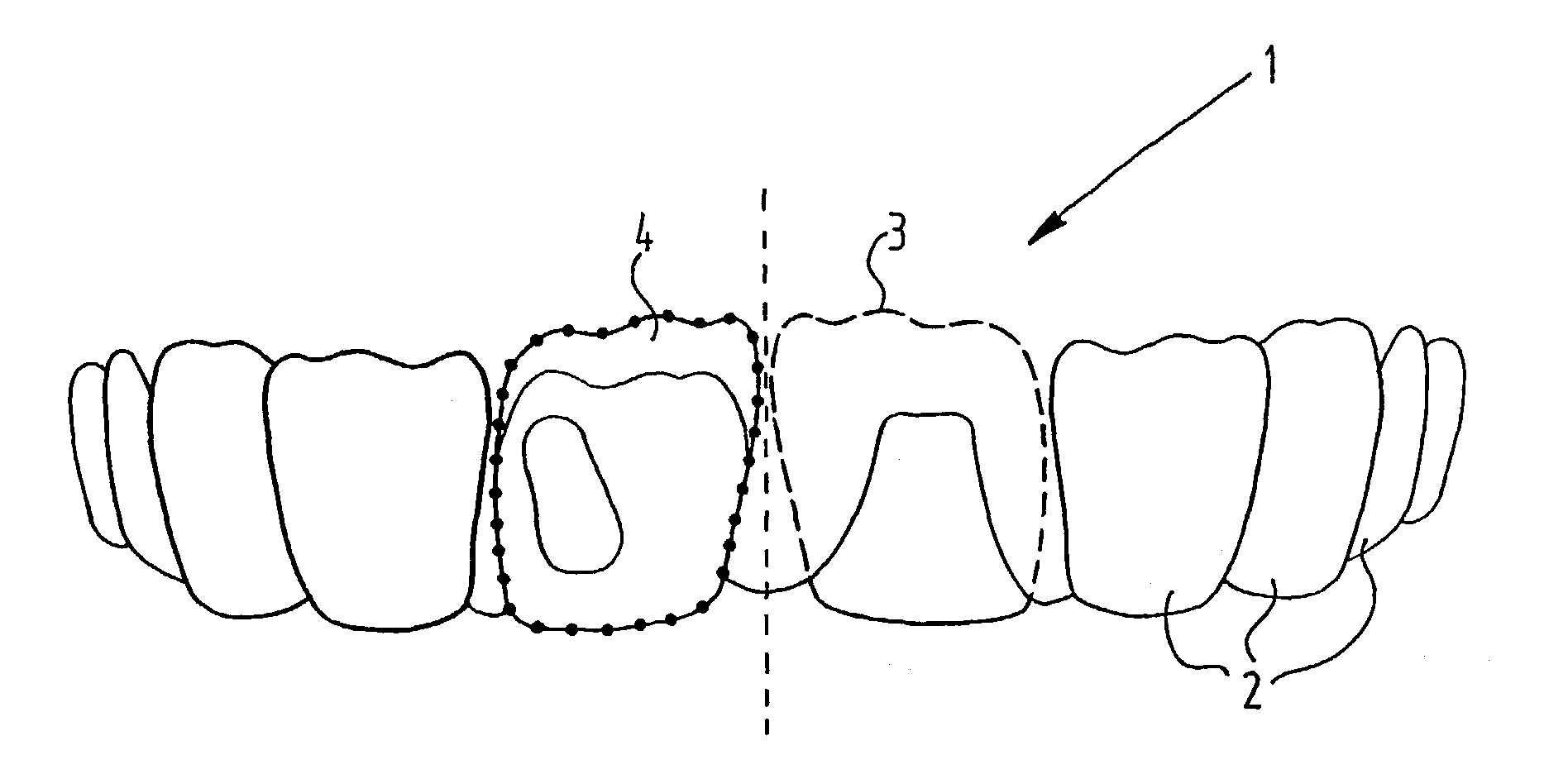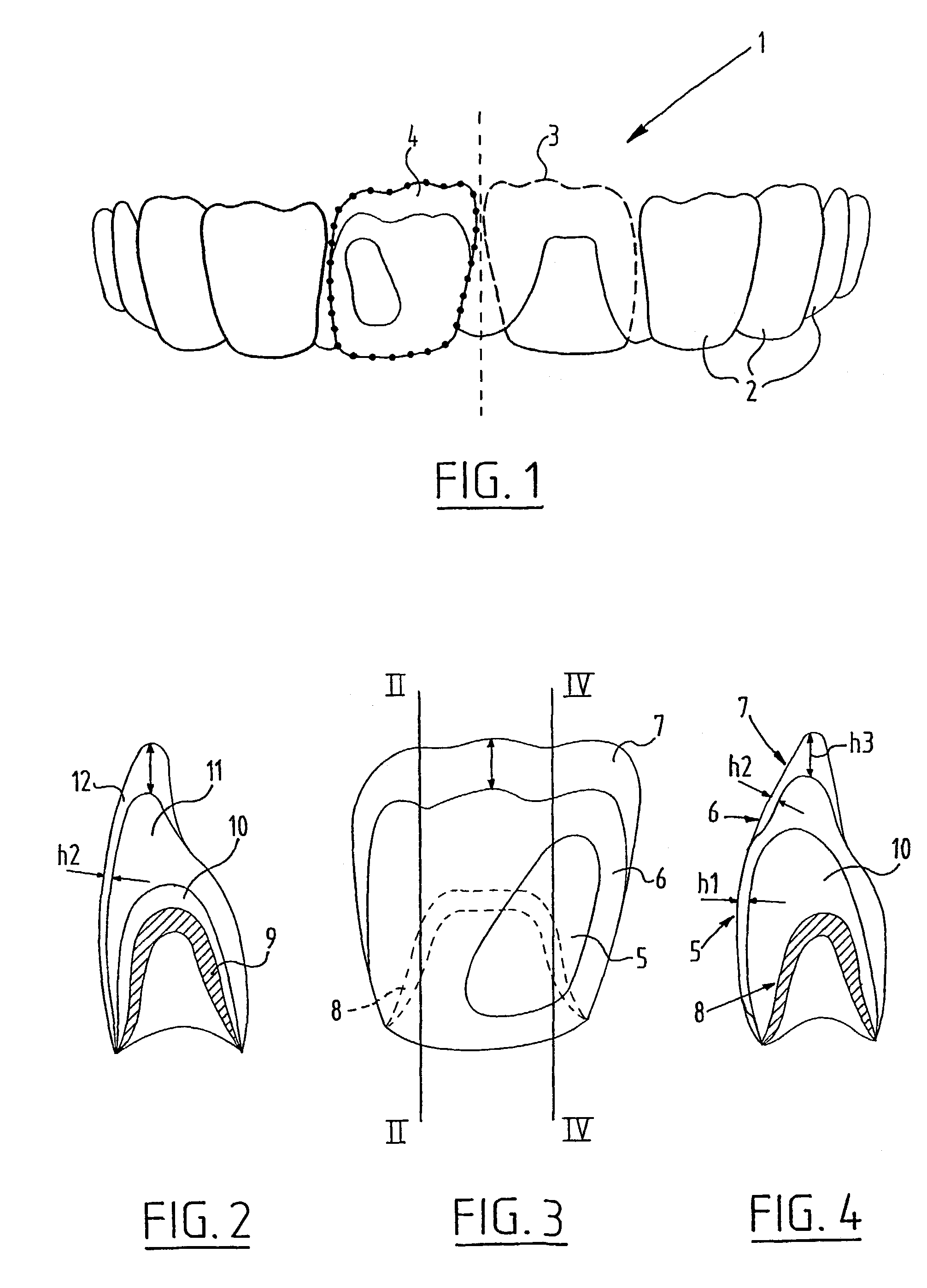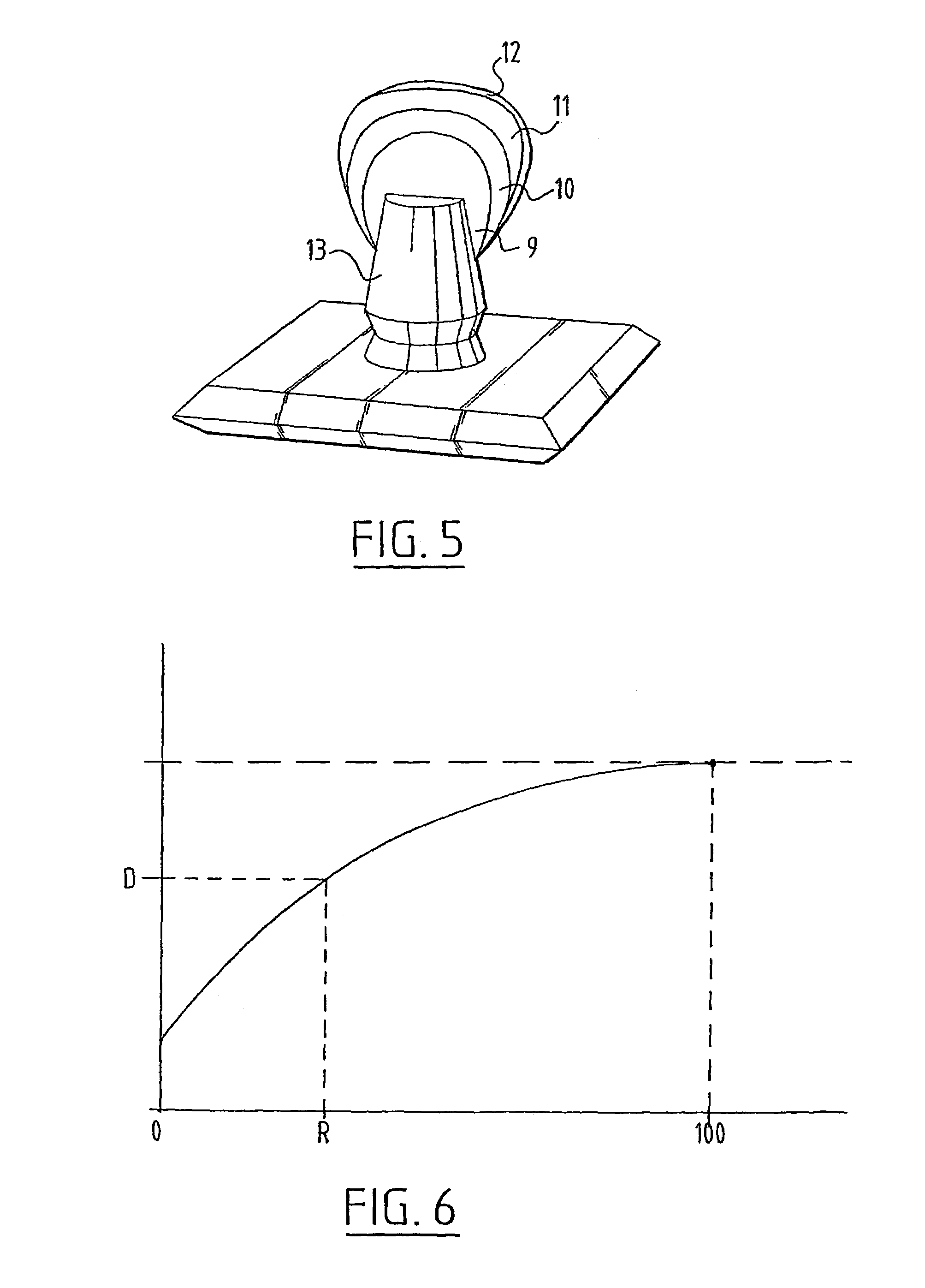Method for production of an artificial tooth
a technology of artificial teeth and production methods, which is applied in the direction of tooth crowns, dental prostheses, teeth capping, etc., can solve the problems of difficult tooth color and translucency measurement, poor quality of dental prosthesis, and inability to achieve good results with that method
- Summary
- Abstract
- Description
- Claims
- Application Information
AI Technical Summary
Benefits of technology
Problems solved by technology
Method used
Image
Examples
example 1
[0096]The tooth selected for measurement is brushed for one minute by the subject with tooth paste and tooth brush. The surface is wiped with a clean paper for saliva and moisture before measurement. Immediately after the cleaning procedure, the color of the tooth is measured by a spectroradiometric color computer. A white porcelain standard (X=95.720,Y=100.019,Z=92.159) of barium sulfate is used for calibration of the instrument.
[0097]Superimpose the mapped contour of the mirror tooth 4 onto the contour of the CAD designed computer crown contour 3 in FIG. 1. Superimpose the three areas 5, 6 and 7 in FIG. 3 found by the shade mapping onto the 2D-image of the newly designed tooth. Adjust h3 according to the mapping of area 5 onto the designed crown. Identify area 5, 6 and 7 in FIG. 3 according to their respective lightness values.
[0098]The shade mapping analyzer is used to identify three different areas superimposed on the contour of the mirror tooth (FIG. 1). Area 6 (FIG. 3) is call...
example 2
[0124]The restoration was designed as described in example 1.
[0125]One of the methods is 3D ink jet printing. In 3D jet printing a binder solution is used to fix the ceramic powder. First the design according to the present invention is converted into STL-files, which slices the designed restoration in hundreds or more of two-dimensional cross-sections (FIGS. 2 & 4 for example). The procedure is as follows:[0126]1. The printing machine spreads a layer of powder of dental material from the source piston to cover the surface of the build piston. A platen reversing relay avowed indefinite overprinting. The time delay between printing adjacent layers was controlled The resolution of the printer was 200×216 dpi. A modified version of the BIO.DOT microdoser (BIO.DOT Ltd., Huntington, Cambridshire, UK) was used for continuous ink jet printing. It has three main sections:[0127]i. the ink control unit which contains ink jet printing and pressurizes ceramic ink using gas so that it flows, fil...
example 3
[0136]Another method is the robocasting. This is a slurry depositing technique capable of producing near-net-shaped restorations that utilizes feedstocks of negligible organic binder content (<1 vol %). The restoration was designed according to the present invention as described in example 1. In robocasting pseudoplastic suspensions (solids volume fraction ca. 0.50 are deposited onto a substrate, such as described in the first example: a ground refractory block (example 1), in a precise pattern, according to an 2D surface (FIG. 2) On minimal drying, the as-deposited suspension undergoes a liquid-to-solid transition that freezes-in the structure of the patterned restoration. The suspension is deposited in a precise pattern onto a moving X-Y table via computer aided design (CAD) instruction. The 3D restoration is constructed using a layer-by-layer build sequence (FIG. 5). First the CAD-design of the restoration is converted into STL-files, which slices the designed restoration in hund...
PUM
| Property | Measurement | Unit |
|---|---|---|
| diameter | aaaaa | aaaaa |
| thickness | aaaaa | aaaaa |
| diameter | aaaaa | aaaaa |
Abstract
Description
Claims
Application Information
 Login to View More
Login to View More - R&D
- Intellectual Property
- Life Sciences
- Materials
- Tech Scout
- Unparalleled Data Quality
- Higher Quality Content
- 60% Fewer Hallucinations
Browse by: Latest US Patents, China's latest patents, Technical Efficacy Thesaurus, Application Domain, Technology Topic, Popular Technical Reports.
© 2025 PatSnap. All rights reserved.Legal|Privacy policy|Modern Slavery Act Transparency Statement|Sitemap|About US| Contact US: help@patsnap.com



